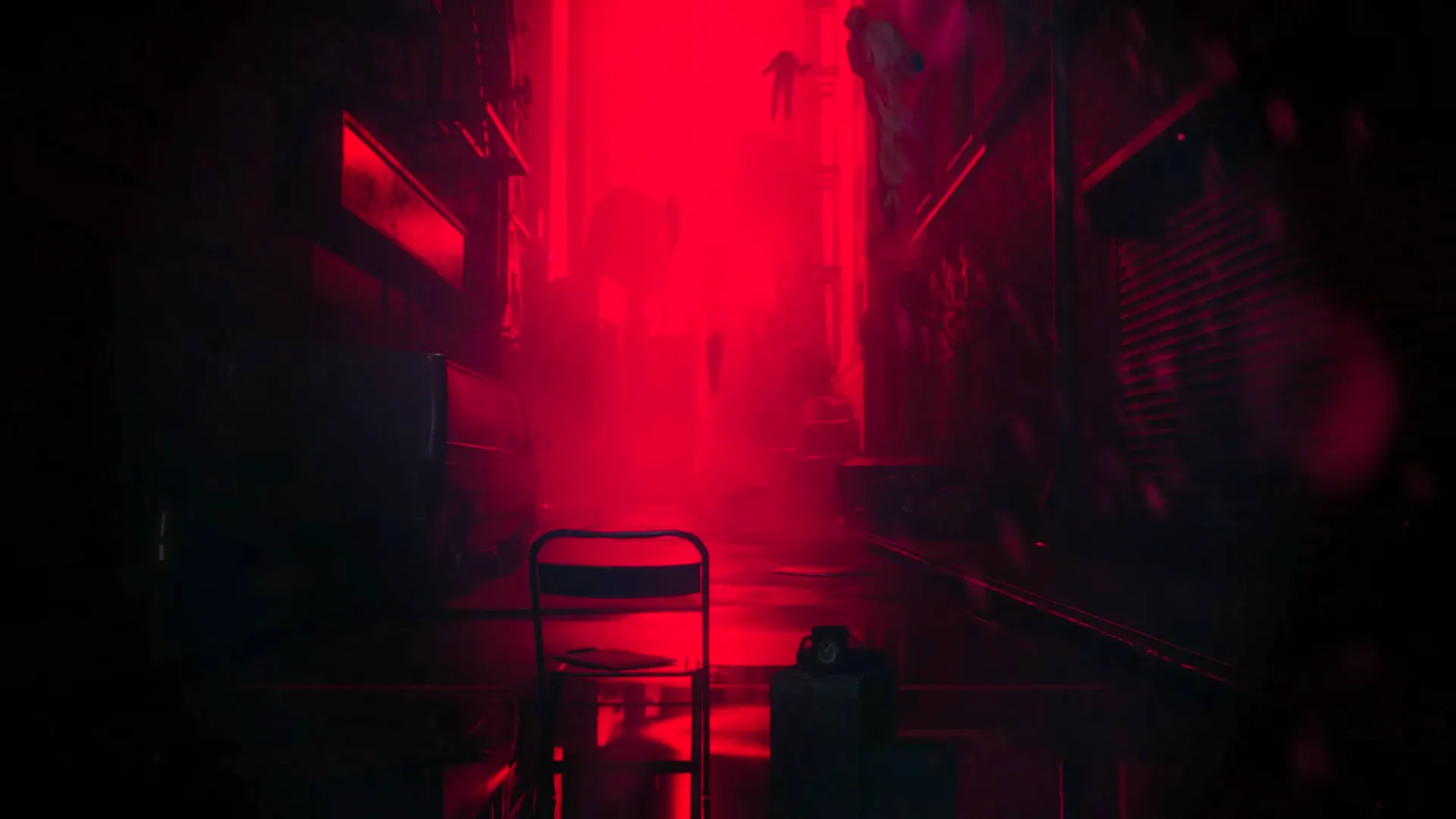Movies News Talk
Alan Wake 2 DLC: The Lake House Review! Terrifying Gameplay + AI Critique! Control 2 Teaser Inside!
Alan Wake 2: The Lake House DLC – A Terrifying Look at Ai, Human Creativity, and the Future of Remedy!
Alan Wake 2's Lake House DLC: More Than Just a Scary Good Time!
Remedy Entertainment's Alan Wake 2 already brought the scares, and the newly released Lake House DLC takes things to another level, offering more than just terrifying gameplay and atmospheric horror. This DLC expansion also has some major food for thought about generative AI and the very nature of human creativity, especially as these two core concepts merge together, merging in surprising, complex ways! It seamlessly merges elements of Alan Wake and Control; a fantastic merging that fans of these series really enjoyed. This addition expands on this success with thoughtful approaches to those themes featured.
I initially found that Night Springs DLC somewhat lacking, the Lake House DLC was truly exceptional! This DLC completely delivers the expected scares alongside profound thoughts and unexpected jokes that kept things remarkably enjoyable! Let's dig into the details; the gameplay and environmental details that help create an entire mood – one created to produce memorable moments, showing off some of those amazingly intense gameplay details! And remember folks; major spoilers ahead!
Exploring Cauldron Lake’s Dark Secrets: A Terrifying Research Facility

The story revolves around Kiran Estevez, an FBC agent investigating that FBC research facility at Cauldron Lake. This place is famously creepy! It’s where some seriously sinister experiments occurred at the hands of Jules and Diana Marmont, this unhappy couple who completely botched their attempts to produce dark works of art; something incredibly sinister and intended to use paranatural forces! That’s right, folks: Jules tortured artists into producing future-predicting paintings! Diana? She sought to replicate Alan Wake's reality-bending writing. That alone creates an absolutely incredible level of storytelling! There is a deep focus in this DLC on specific ways artists' skillsets might just be taken advantage of, with the most gruesome ways conceivable imagined, showing a creative way of presenting ethical concerns of artists, using their skills and talents in problematic ways.
We then find out an unsettling connection to Alan Wake’s writing: it's been revealed as a paranatural conduit. Alan’s unique talent—creating those reality-shifting narratives— gets twisted by the dark presence near the Cauldron Lake. And Diana’s experiments totally sought to copy his abilities; those eerie writing implements and various devices; a scene designed to create a mood– and make some very critical social points for creative output – particularly around the growing need and utilization of Generative AI to create these works, and emphasizing an ethically problematic approach; highlighting what ethical failures mean, and emphasizing that exploitation through abuse remains possible even today, only hidden far more than it otherwise could’ve been a century or so ago. There is also this implied caution against trusting machines. They have a dark and untrustworthy origin, completely subverting all that might seem right or true without questioning it further.
The Eerie Echoes of AI: A Critique of Automated Creativity

Diana's approach; those strange ways in which she makes those reality-bending pages really resonates with the actual development of Generative AI. The AI model demands real data; it takes those abilities of real human artists who might feel otherwise powerless without such support or access and use them for exploitation, as those poor and helpless workers (in Diana’s case, it really shows a surprisingly direct criticism of corporate art production)! The implications alone makes this an essential point that gets addressed within that smaller DLC’s short duration; this makes this DLC especially impactful. It also implies that corporate power does misuse technologies without due caution or consideration to consequences – whether those are economic consequences to individuals who depend upon their craft or the more obvious artistic aspects inherent to such technologies and productions.
Human Creativity's Dark Side: A Complex Commentary
The Lake House doesn’t celebrate human creativity outright (and critique automated art creation); it offers more complexities! The writers did explore more than just what might seem “right.” It doesn't only convey what’s fundamentally unethical with using machines but acknowledges those dark sides. Alan’s writing brought some insane destruction! Powerful–yes—but dangerous too! This point shows just how deeply Remedy's works explore the very core of this narrative art and human creative power– using writing and the ability of expressing oneself with it. That inherent risk is an important element in Alan Wake's lore – showing how immense and potentially terrifying creativity and those expressions inherent with these narratives, really are; and what it implies in reality! The entire thematic arc that is established and demonstrated is highly profound. Even simple moments; showing characters suffering due to storytelling and the intense emotion that the mere reading of this kind of fiction create; truly emphasizes a level rarely seen in that medium! There’s a depth explored with an explicit naming of Chimamanda Ngozi Adichie's TED Talk, showcasing how much profound influence some storytelling work does carry across many decades. Stories could hurt, mislead and produce harmful realities if not used well, making even simple enjoyment dangerous.
Control 2 Teasers and the Expanding Remedy Universe
This isn’t simply a stand-alone Alan Wake 2 addition. This is Remedy’s connected universe at its finest; showing incredible cross-references to the Control franchise which sets things up beautifully and produces those hints about Control 2. It also explores themes regarding how corporate forces could ultimately abuse these kinds of technologies without much caution or fear; thus resulting in further catastrophe.
Optional scenes show Estevez transported across locations (Oceanview Motel from Alan Wake 2, then to Control's Oldest House), encountering Dylan Faden (Control’s protagonist’s brother)! The possibility alone hints at huge implications in the impending Control 2, which involves that crazy and devastating escape of The Hiss; making this implied plot important; further demonstrating just how creative some developers remain! The actual depth added from this seemingly smaller side project goes far beyond the smaller aspects demonstrated initially. This actually builds another series of events which could possibly result in further releases – those implied narratives for Control 2 and FBC: Firebreak.
Conclusion: Lake House DLC - A Must-Play Experience!
Lake House is intense! Terrifying, funny and deeply thoughtful. It seamlessly expands Alan Wake's and Control's universes – making some excellent commentary regarding human art and the development and deployment of new AI systems in storytelling and the creative worlds. Even its shorter length does not matter, because it truly delivers, presenting highly memorable horror gaming with profound thought-provoking questions; making Remedy’s connected universe increasingly worth exploring; thus leaving many players excited and interested for further installments of those associated titles.
- Ambessa Joins League of Legends! Arcane's DEADLY New Champion Revealed - Abilities, Release Date & ARAM Update!
- Cobra Kai SEASON 6 Part 2 TRAILER: Barcelona Showdown, Shocking Betrayals & The Final Fight!
Related Articles
- Ambessa Joins League of Legends! Arcane's DEADLY New Champion Revealed - Abilities, Release Date & ARAM Update!
- Vulture Festival 2024: Elizabeth Olsen, Katt Williams, Paris Hilton + MORE! Tickets On Sale Now!
- Fire Country Season 3 Episode 2 Recap: SHOCKING Secrets, Family Fights & HUGE Cliffhanger! MUST WATCH!
- Taika Waititi's NEW Hulu Series 'Interior Chinatown' - TRAILER, Release Date & MUST-SEE Details!
- Tulsa King Season 2 Episode 7 SHOCKER! Car Bombing REVEALED + Major Plot Twists! MUST READ!
- Bruce Springsteen's Wife Patti Scialfa's Cancer Update! Heartwarming News & New ABC Special Details!
- Laurie Metcalf & Eric McCormack JOIN CBS's 'Elsbeth'! Season 2 Guest Stars Announced! MUST WATCH!
- Elon Musk's $1 MILLION Election Giveaway: Is It LEGAL? Trump Endorsement Sparks HUGE Controversy!
- Laverne Cox UNMASKED on The Masked Singer! Emotional Barbie Night Reveal + All the Clues!
- Keanu Reeves & Alexandra Grant's Adorable London Date! See the Sweet PDA Photos + Relationship Details!
- Dragon Age: The Veilguard - CONTROVERSIAL Scene Sparks Outrage! BioWare's Inclusivity FAIL? Review Inside!
- Election Betting Markets PREDICT Trump WIN? Are Gambling Odds MORE Accurate Than Polls? HUGE Controversy!
- Taylor Swift Eras Tour Ticket SCAMS ALERT! Indiana Attorney General's WARNING & How to Avoid Getting Ripped Off!
- Google Maps AI REVOLUTION! Conversational Directions, Personalized Recommendations & More!
- Brett Goldstein's UNRECOGNIZABLE Cameo in Shrinking Season 2! Shocking Twist Will Leave You SPEECHLESS!
- US Military's AI Super Soldiers! Hyper-Enabled Operator Program: Iron Man Tech & The Future of Warfare!
- Last of Us Part 3: Factions Multiplayer MUST Return! Naughty Dog Needs to Fix Past Mistakes!
- World Series FAN ATTACKS Mookie Betts! WILD Catch, Ejections & Game 4 Recap! Unbelievable!
- NYT Connections Answers & Hints: Solve Today's Puzzle with Our Expert Guide!
- Fantasy Football Week 8 Start/Sit: QB, RB, WR, TE RANKINGS & Waiver Wire MUST-HAVES!